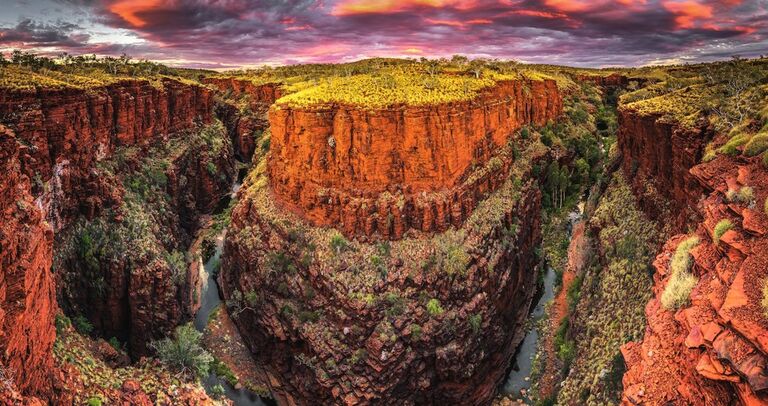Scientists Studying 3.2 Billion-Year-Old Rock In Australia Found Links To The Book Of Genesis
By Emma Matthews
Australia may be full of many wonders, but the Pilbara region definitely stands out among them all. This area in Western Australia is not only packed with unusual and one-off wildlife and greenery, but it’s also home to a whole host of astonishing geological features. The eye-catching rock formations in the Pilbara have even given scientists crucial insights into the beginning of the world. And, incredibly, one of those discoveries suggests there’s some scientific basis for the events mentioned in the biblical Book of Genesis.
The Pilbara region
Sprawling over more than 193,000 square miles, the Pilbara region is double the area of the entire United Kingdom and as big as the northeastern United States. And given the sheer size of the landscape, it’s perhaps no surprise that environments there are varied, ranging from dry and desert-like to tropical.
Natural diversity
But there’s something for everyone in the region – from beautiful sandy beaches and secluded islets to rocky gorges, plunge pools and mountains. And the incredible natural wonders don’t end there. Rare animals such as the Pilbara leaf-nosed bat and the olive python are also to be found in this part of the world.
Rock carvings
There’s also a more than 30,000-year history of human habitation in the Pilbara, with its one million rock carvings all acting as evidence that ancient peoples once lived and thrived there. Given the remarkable flora and fauna in the area, though, you may be surprised to learn that the Pilbara is also seen as “the engine room of Australia.”
The engine room
How did the region earn that moniker? Well, it appears that the landscape is bursting with natural resources – some of which are typically used within industry. Mining operations have found iron ore, natural gas, gold and base metals, for example, among the rocks there.
